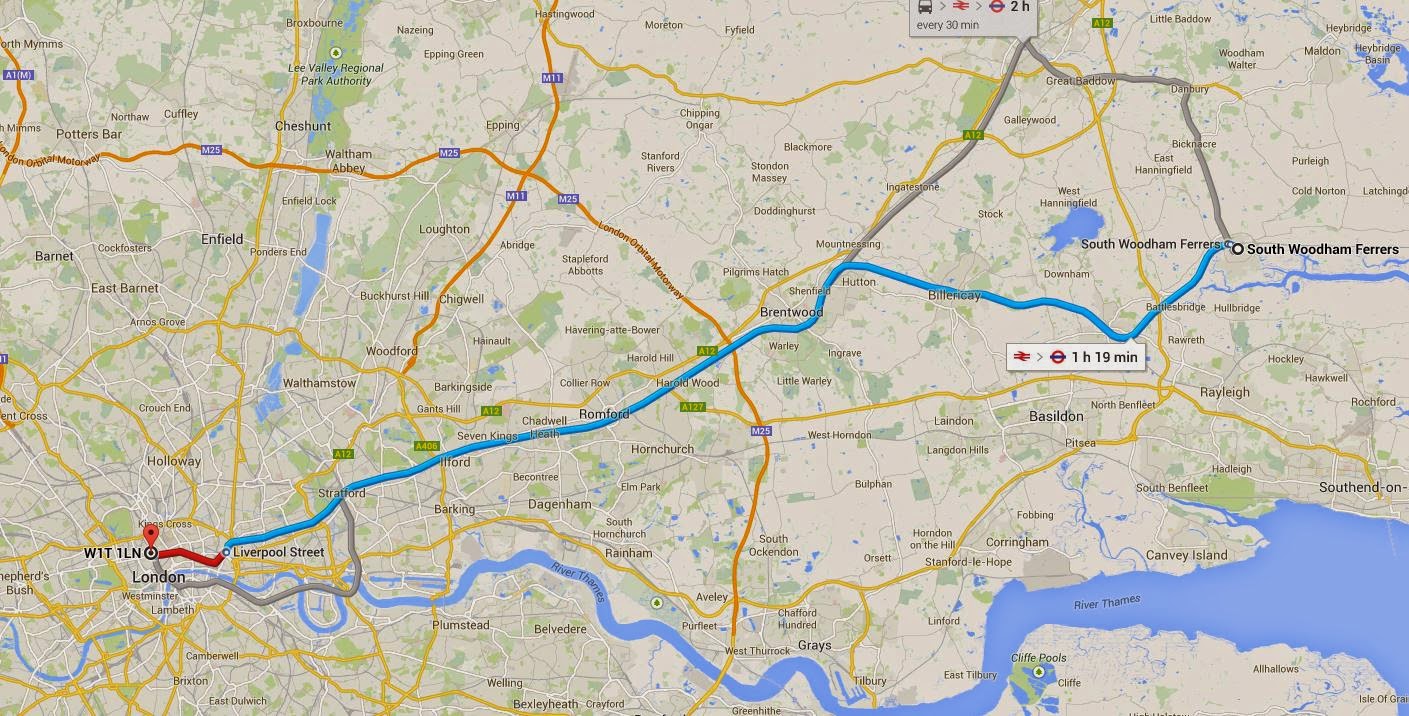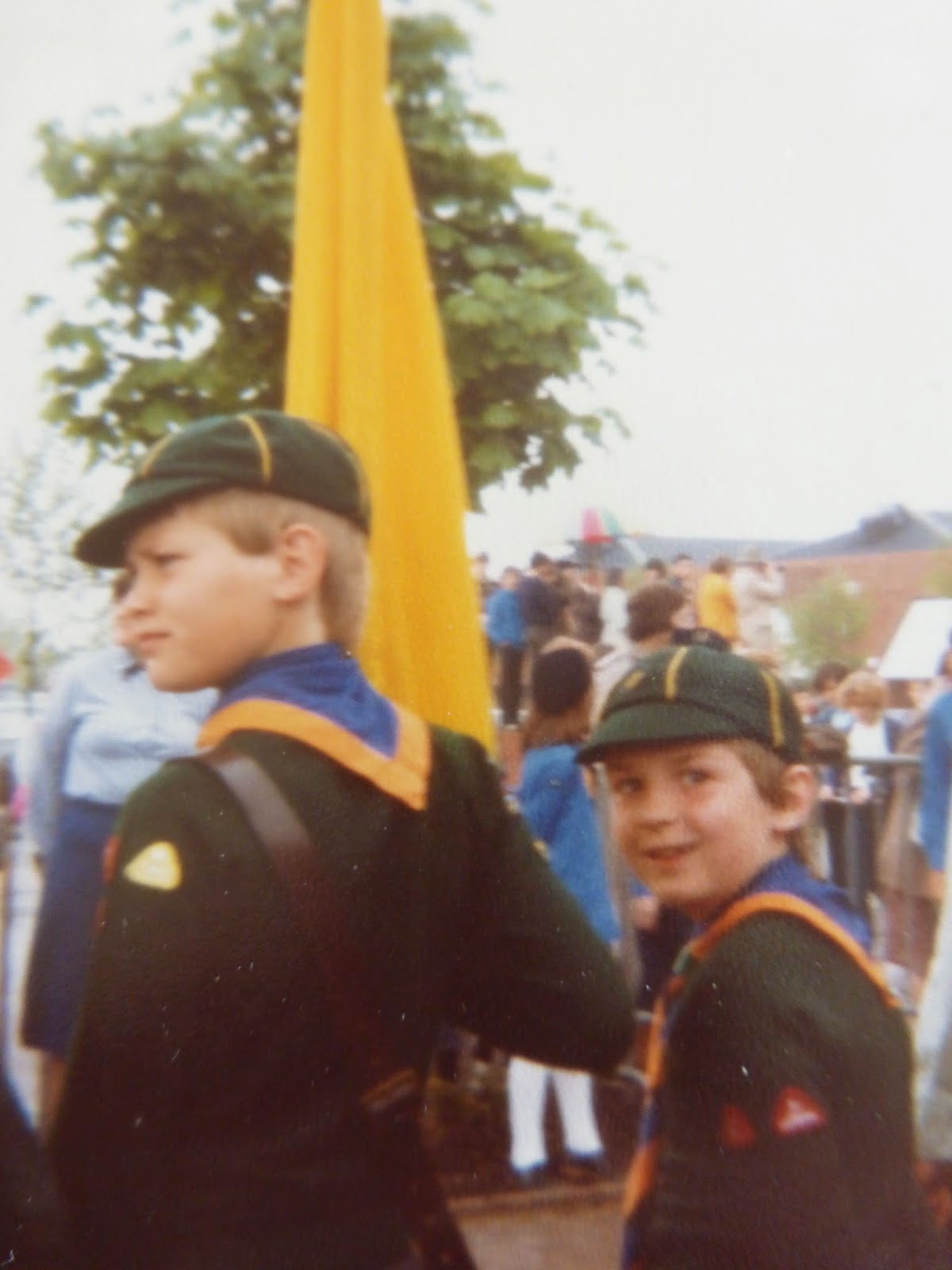AARgh!! Commuting! During my delayed commute to work this morning (one cancelled train, arrived at work 11:00, 1 hour 15 minutes late), I noticed the above sign, newly posted on a tube station wall featuring new information pertinent to me, that I was surprised I have not been informed of, or encountered earlier.
The net result of the situation indicated in said poster is a major pain in the arse for me. I'm a Mon-Fri commuter and within the boundary conditions of affordability, working hours, railway timetables, home, work and station locations I've designed the optimum journey that I can - this is my standard run scenario as laid out below. With the planned 'improvement works' this isn't going to work anymore, so I need to
creatively use and respond to change.
Goals
- Get to work on time despite changes.
- Minimise disruption to myself and family (people care)
Survey: The Standard (Rat) Run
My regular commute begins with a walk from home to the local railway station:
Take the train to Stratford station in east London:
Change platforms at Stratford and board a Central Line London Underground train to Tottenham Court Road station:
Then a walk from Tottenham Court Road station to my place of work at 21 Stephen Street:
Arrive at work at 09:41, climb one flight of stairs and jobs a goodun, my hours are 9:45 to 18:00. I'm here on time! Total journey time: 69 minutes (1 hour 9 minutes).
Caveat 1: In that first map you'll see my walk to the station goes over the railway line. That road/rail crossing has barriers and they come down 3-4 minutes before the train leaves (they come down as the train is approaching). So if I don't want to miss that train I need to leave at least 4 minutes earlier.
Revised journey time: 73 minutes (1 hour 13 minutes). Time of arrival unchanged.
Caveat 2: My train from South Woodham Ferrers to Stratford very rarely arrives on time. The delay is generally of the up to 29 minutes of delay type that is not eligible for compensation (although c. 20 a year exceed that delay and are). Most delays are of a few minutes, with the train generally arriving at Stratford about 09:21. The knock on effect is I have to get a later Central Line train, arriving Tottenham Court Road station at 09:42. Revised journey time: 81 minutes (1 hour 21 minutes). Time of arrival: 09:46 (I'm late! Maybe if I run from Tottenham Court Road station to work I can halve the journey time and still be on time, otherwise I'll have to brazen it out - it's only a minute or two late...)
Caveat 3: Getting from the London Underground platform to the street takes about 3 minutes.
Revised journey time: 84 minutes (1 hour 24 minutes). Time of arrival: 09:49 (I'm more late, running isn't going to cut it, I'll have to brazen it out - it's only a few minutes late...)
Caveat 4: About 1 in 10 of my London Underground morning journeys will be delayed by around 5 minutes. So once a fortnight, on average, my journey time will be 89 minutes ( 1 hour 29 minutes) and I'll be noticeably late.... but it's not too bad right?
What's New?
The poster this morning revealed that a factor I had considered fixed (the Central Line station: Tottenham Court Road) was in fact not, for the whole of 2015 it will be unavailable, necessitating an alteration to my journey.
Ideally I need a small and slow solution (make the least change for the greatest possible effect). Two other nearby Central Line stations (Oxford Circus and Holborn) will remain open, I could use one of those instead.
OPTION 1: Oxford Circus station offers the shorter walk to my office but a longer London Underground journey:
If I go via Oxford Circus station, then my ETA at work is 09:57 via the shortest route (journey time will be 92 minutes (1 hour 32 minutes). I'll be 12 minutes late that I'll need to make up at the end of the day.
OPTION 2: I make the longer walk from Holborn station, with a shorter London Underground journey:
If I go via Holborn station, then my ETA at work is 09:56 via the shortest route (journey time will be 91 minutes (1 hour 31 minutes). I'll be 11 minutes late that I'll need to make up at the end of the day.
Analysis
That doesn't sound too bad, leaving work 11-12 minutes later. That soon adds up though, over the year I'll have to do it it's c.44-48 hours.... The bigger question for me, however, is: what time can I get home?
At present I leave work at 18:00, walk to Tottenham Court Road Station, get the Central Line to Liverpool Street station and take the next train to South Woodham Ferrers:
With the walk from the station, I'm generally home by 19:40. Total journey time: 100 minutes (1 hour 40 minutes). [makes my total commute (outbound + inbound) 169 minutes. Added to my working day of 8 hours 15 minutes, it makes my daily
weekday work commitment 11 hours 4 minutes.]
OPTION 2a
If I go for Option 2 above I'll leave work at 18:11, I can then walk to Holborn, pick up the Central Line there and head for Liverpool Street. With the 13 minute walk + 3 minutes from street to platform, I'll get the next London Underground train after 18:27:
That gives me 6 minutes to get from the Central Line platform to the mainline platform for my train. I reckon it takes 3 minutes. So that gives me 3 minutes spare. Great! My total work/commute time has not increased and I'm getting more exercise every day with some extra walking.
Caveat 5: On my journey home, when I reach the Central Line platform I often can't get on the first London Underground train due to overcrowding and have to wait for a second or third train.
Caveat 6: With Tottenham Court Road Central Line station out of action the number of people using both Oxford Circus and Holborn is liable to increase heavily slowing access to both platforms and trains. (Already access to Tottenham Court Road is often limited between 18:00-18:30 due to overcrowding).
Bearing in mind these caveats, I'm more likely to get this London Underground train:
Giving me only 2 minutes to get from the Central Line platform to the mainline platform for my train, probably not enough - I'll miss it!
OPTION 2b
At this time of day, London Underground trains eastwards get more crowded at each station. If instead of walking to Holborn I walk to Oxford Circus, I may be more likely to access the platform quickly and get on the first train that arrives there. So could leave work at 18:11, then walk to Oxford Circus, pick up the
Central Line there and head for Liverpool Street. With the 11 minute
walk + 3 minutes from street to platform, I'll get the next London
Underground train after 18:25:
That gives
me 4 minutes to get from the Central Line platform to the mainline
platform for my train. As I reckon it takes 3 minutes, I can make it. Great! My total work/commute time has not increased and I'm getting more exercise every day with some extra walking.
Caveat 7: That 11 minute walk on Google Maps from my office to Oxford Circus station is mostly along Oxford Street. Google Maps doesn't seem to take traffic into consideration when timing it's walking directions. Oxford Street swarms with pedestrians walking in both directions at this time, slowing progress considerably. Walking through this, or taking an alternate route with less traffic means the journey time is more likely 13-14+ minutes.
Bearing in mind that caveat, I'm more likely to get this London Underground train:
As before, this only gives me 2 minutes to get from the Central Line platform to the
mainline platform for my train, probably not enough - I'll miss it!
Other Options
OPTION 2c
OK - So as I'll probably miss the train home I normally get, I'll just get the next train from Liverpool Street to South Woodham Ferrers. The trains home aren't very regular so I should have no problems making it!:
With the walk from the station, I should be home by 20:36. Total journey time: 145 minutes (2 hours 25 minutes).
I don't particularly like this option, it make my total commute (outbound + inbound) 236 minutes or nearly 4 hours. Added to my working day of 8 hours 15 minutes, it makes my daily weekday work commitment 12 hours 11 minutes.
OPTION 2d
I could instead travel earlier and take a steal on the day.
With the platform to street jive plus the walk to the office I'll be in the office at 09:08 (ceteris paribus) 36 minutes early.
Which means I can leave at 17:24, be at Holborn Central Line platform for 17:44. I don't really know how busy it's going to be then, but the next train will be:
Which gives me a fighting chance of getting:
Then I'd be home c.19:00. Total journey time: 96 minutes (1 hours 36 minutes).
It makes my total commute (outbound + inbound) 177 minutes, a little under 3
hours. Added to my working day of 8 hours 15 minutes, it makes my daily
weekday work commitment 11 hours 12 minutes. This is only a little over my current situation, so seems like a winner.
Caveat 8: If Holborn station is busier than I'm expecting at 17:44, I haven't got much wriggle room and I could easily miss the 18:02 from Liverpool Street.
Then I'm back on my regular 18:41 and my return travel takes 136 minutes (2 hours 16 minutes), making my total commute 212 minutes. Added to my working day of 8 hours 15 minutes, it makes my daily
weekday work commitment 11 hours 47 minutes.
Decision
Option 2d is still much better than Option 2c. Even in the non-ideal scenario, its better by 24 minutes. If Option 2d works to plan it's nearly an hour better. It has to be my decision
It is still worse than my current situation though which will have effects elsewhere in my life system:
- I'll need to get up earlier (and therefore go to bed earlier to maintain sleep hours), or
- streamline my morning routine - but a slow morning is important to me
- I'm away from home longer, so less time with partner, for chores, to relax etc. This is already a critical issue for me
- The advantages of getting the 18:02 rather than the 18:41 are so great that every day I'm going to be rushing to try and get it with resultant stress and likely frequent disappointment.
- I'll be walking more in a high pollution area at a heavy traffic time
- I'm trading more of my life energy into this job with no extra return, in fact my travel costs are going up faster than inflation, my pay less than inflation and everything points towards this getting worse....
- ∴ My 'true hourly wage'** (Wages minus work-related costs divided by total work-related hours) is decreasing
* the use of the word 'commutation' in the post title is meant in the sense of exchange, as I exchange more of my life energy for the diminishing returns of this job (literally with below inflation pay rises!). It obviously also makes double play with the verb commute.
** Learn more about this concept in
Your Money or Your Life: 9 Steps to Transforming Your Relationship with Money and Achieving Financial Independence by Vicki Robin and Joe Dominguez











































